ISSN: 2511-7602
Journal for Art Market Studies
ISSN: 2511-7602
Journal for Art Market Studies
Haoyang Zhao
Using an illustrated album of the Qing imperial court of the eighteenth century as a case study, the article explores the specific challenges presented for provenance research by this type of object, as well as the reciprocal benefits of interlinking research in provenance with that of traditional art history. The Huangchao Liqi Tushi (HCLQTS), or the Illustrations of Imperial Ritual Paraphernalia, is an illustrated encyclopedic album of Qing imperial regulations and codes. The album discussed here was potentially looted from the Qing imperial garden, the Yuanming yuan, in 1860 by Anglo-French troops. Today, seven public institutions across the world are known to hold pages of the coloured version of the HCLQTS. In Europe, the Victoria & Albert Museum, the National Museum of Scotland, the National Museum of Ireland, and the British Library all have incomplete sections of the HCLQTS in their collections. In North America, the Mactaggart Collection of the University of Alberta Museums also holds an incomplete section. As research on this project is ongoing, a comprehensive report on the album’s provenance will not yet be outlined. Instead, the author shares his experience on how disregarded marks on the back of each page, together with the materials typically categorised as art historical, provided essential support for provenance investigation in a case where limited records were available.
In the last two decades, provenance research has become an integral part of academia. While questions relating to the legal ownership of objects for both institutional and private owners have certainly played a part,1 better accessibility of archives and publications for researchers due to developments in digitalisation has also been crucial. It is now generally accepted that provenance research offers rich new material to further investigate complex historical interactions between owner and object,2 and how a work of art interacts with society at large.3 Information on the value or quality of a work, its production or usage, is joined by often fragmentary information recording the movement of these objects, such as sale records, descriptions from newspapers, books or letters.
Such professionalization sets new challenges for provenance researchers. Firstly, as an approach strongly reliant on archival sources, the outcome can be significantly affected by a lack of supporting documents. As a result, most provenance research projects, especially those covering periods over a century ago, have to rely on available well-documented objects or established collection history. Even though recent technological developments have made much more material searchable, less famous individuals in history may simply not be recorded. Conversely, earlier art historical assessments may have disregarded provenance information as less relevant to object appreciation. Apart from a signature, labels, inscription marks, or annotations with no obvious meaning may have also been disregarded and lost from sight.
The mutually beneficial relationship between traditional art historical research and provenance research becomes apparent in a case study on investigating the provenance of scattered pages originally from an illustrated album of the Qing imperial court of the eighteenth century, which was potentially looted from the Qing imperial garden, the Yuanming Yuan, in 1860 by Anglo-French troops. As this is an ongoing project, a comprehensive report on its provenance will not yet be possible. Instead, the following article shares the experience on how disregarded marks on the back of each page, together with existing art historical findings, provide essential support for provenance investigation when there are limited records available.
Research for this case study started as a larger topic: a search for objects with potential Yuanming Yuan provenance held outside China. The Qing imperial garden complex, the Yuanming Yuan or Garden of Perfect Brightness was ransacked by Anglo-French Troops in 1860 during the Second Opium War.4 Like many other Yuanming Yuan provenance projects, this study began with a provenance reference in a history book on the Second Opium War, whose author noted that “The Victoria and Albert Museum and British Museum also have books taken from Beijing collections and a number of pages of Huangchao Liqi Tushi taken from the Summer Palace 1860”.5 Based on this information, the original aim of the project was to examine the evidence whether this statement was true and if that was the case, how these pages ended up in the Victoria and Albert Museum (V&A).
The Huangchao Liqi Tushi (hereafter the HCLQTS), or the Illustrations of Imperial Ritual Paraphernalia, is an illustrated encyclopedic album of Qing imperial regulations and codes on silk. A complete set consists of six parts - ceremonial vessels (祭\器), scientific equipment(儀\器, dress(冠\服), musical instruments(樂\器, insignia(鹵\簿, and weaponry(\備\.6 In each section, a coloured caption for most of the objects is illustrated on a square silk plate on the right with a paragraph of explanatory text written on the left in black ink (fig. 1).
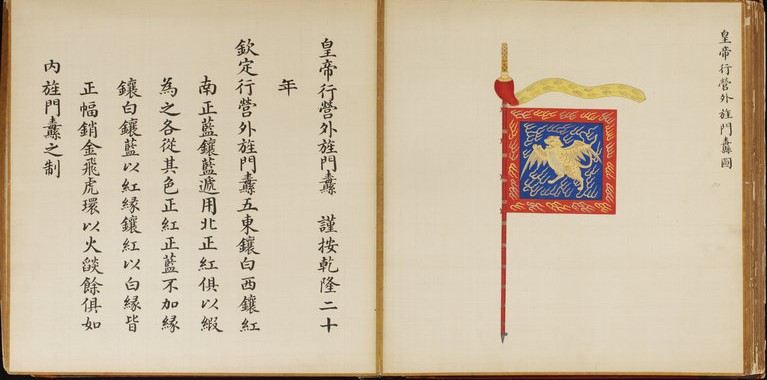
Fig. 1: One folio of HCLQTS with illustration to the right and explanatory texts to the left (museum inv. number: 872-1896) © Victoria & Albert Museum
The HCLQTS is known in two main versions, the coloured version painted by the court artists and the monochrome version in woodblock engraving.7 According to the preface written and signed by the Qianlong emperor, the coloured version was completed in the 24th year of Qianlong (AD 1759), and a printed version was first produced by the Palace Publications Office in the Wuying Palace in 1766 (Wuyingdian edition), later collected into the Four Treasures imperial library project in 1773 (SKQS edition).8
The printed version, especially the SKQS edition, was widely published and can be found in many museums and libraries, while the coloured version is much rarer. Today, seven public institutions across the world are known to hold pages of the coloured version of the HCLQTS. In Europe, the V&A, the National Museum of Scotland (NMS), the National Museum of Ireland (NMI), and the British Library (BL) have incomplete sections of the HCLQTS in their collections.9 In North America, the Mactaggart Collection of the University of Alberta Museums is the only institution holding an incomplete section.10
In addition, coloured copies of HCLQTS are known to be preserved in the Palace Museum Beijing and the National Museum of China. However, none of the editions has been published. Accordingly, the question remains open whether the two editions are complete and what exactly constitutes the contents of a complete edition.11 Ming Wilson mentions in her study that a coloured edition in a smaller size, which was originally kept in the Summer Residence at Chengde, was shown to her in the National History Museum of China (today the National Museum of China) during her research in the early 2000s.12
To date, only two studies have been published that specifically discuss the provenance of the V&A portion of HCLQTS.13 According to these, the portion with a Yuanming Yuan provenance was acquired from a British man called Walter H. Harris (c. 1852–1922) in 1895.14 In fact the acquisition was made by a group of three institutions: the South Kensington Museum (now V&A), the Royal Scottish Museum (now National Museum of Scotland, NMS) and the Dublin Museum of Arts and Sciences (now National Museum of Ireland, NMI), with the pages shared among them.15 The V&A further acquired additional portions in 1900, 1904 and 1953, but it is not clear if these were also connected to a Yuanming Yuan provenance.16
Following the approach of traditional provenance research, all available archives relating to the Harris acquisition were reviewed. According to the V&A archives, a total of 290 pages of Chinese books, titled “Coloured illustrations of Chinese Costumes & and Descriptions” were sold to the Art Library Division of the South Kensington Museum (later V&A) in 1895.17 After a series of discussions, it was agreed that 61 sheets and another 65 sheets would be sent to Dublin (NMI) and Edinburgh (NMS), with the rest remaining in the V&A.
The acquisition letter claims a Yuanming Yuan provenance: “Illustrated Catalogue of the State Wardrobe of the Emperor of China, taken from the Summer Palace in Pekin”.18 However, it is not clear whether the Yuanming Yuan provenance was provided by Harris or whether it was recognised by the museum staff from the two pages with the yuan ming yuan bao 圓明園寶 seal at the time of acquisition. The NMS only has a check-list recording how the museum received their portion from the V&A, and the NMI only has a register noting the content of each page with a short description.
As for Harris, newspaper and other archives were reviewed to seek any potential concatenation between him and the art collection or the looting of Yuanming Yuan. Unfortunately, nothing was found. He was too young to have taken part when the looting occurred and his father, a builder from Cornwall, had no connection to either collecting or looting.19 In Harris’ entire biography, only two things may relate to the HCLQTS. Firstly, he was appointed a member of the British Committee of the British Commission for the Chicago International EXPO 1893 and was involved as a committee member in several exhibitions in Europe in the following years.20 Secondly, he had once built a military medal collection which included two medals related to the war in 1860.21 However, neither of the sources provide any further clues. As a result, even after reviewing his public record, there is no indication where or how he obtained his section of the HCLQTS.
As with the failure in tracing the provenance from Harris’ records, attempts to find clues in looting-related materials also did not produce results. Unlike the album of the Forty Views of the Summer Palace, another looted album held today in the National Library of France which can be traced to a French Captain Dupin and thus has an easily established chain of provenance,22 there is no documentation relating to the looting of the HCLQTS. Furthermore, even for a modern scholar it is difficult to assign an easily identifiable English name for the HCLQTS, which would enable searching sales catalogues by keyword. Also, none of the soldiers who published their experiences during the looting ever mentioned anything even just similar to it.
At this point, traditional provenance approach could offer nothing further unless new records about Harris were found. Facing the difficulties in archival research, the study had to turn back to the object itself and to the material used in traditional art historical studies.
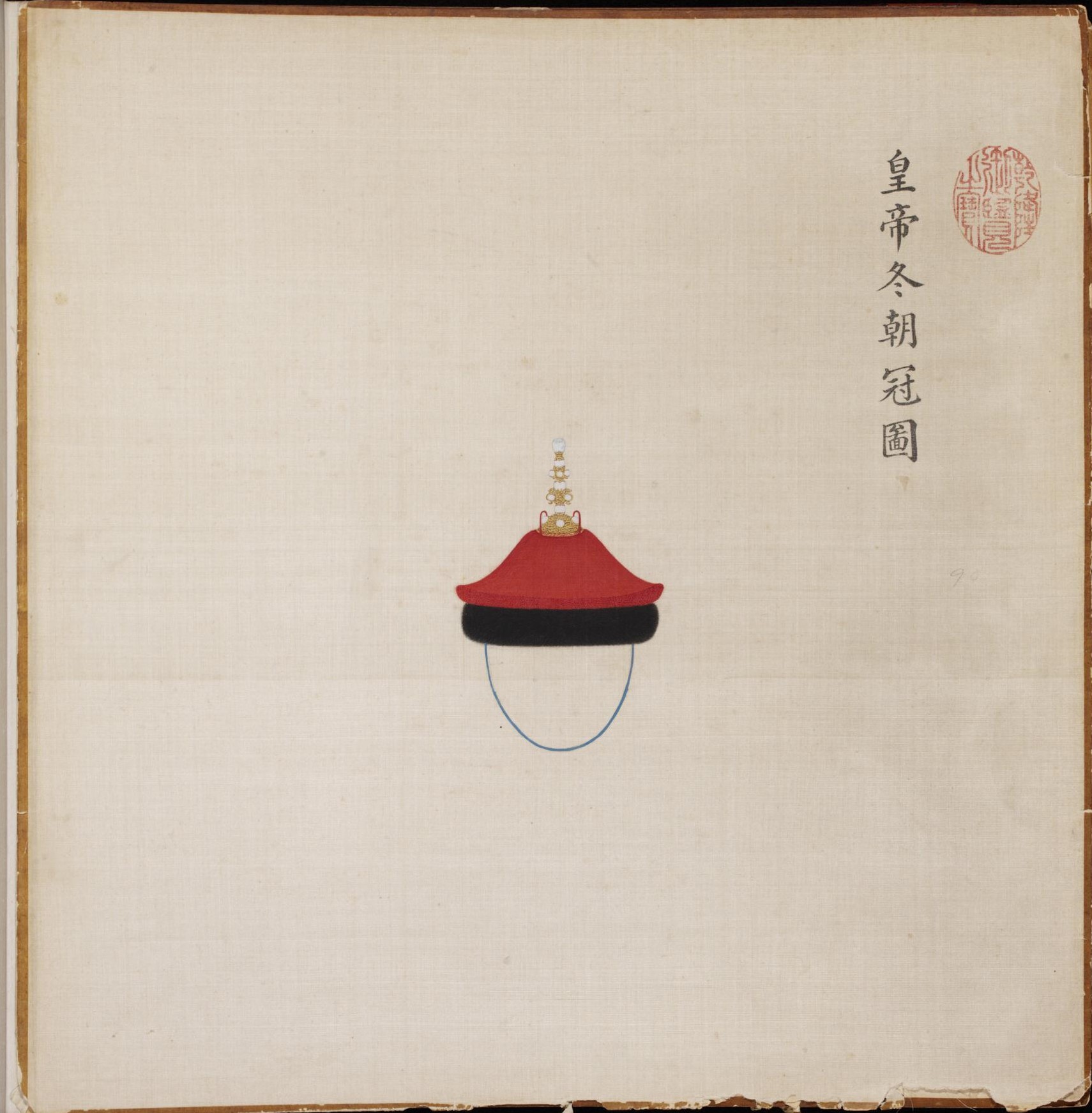
Fig. 2: The front of the Emperor’s winter hat (museum inv. number: 809-1896) © Victoria & Albert Museum
Fortunately, when checking the V&A and NMS portion of the HCLQTS, additional clues were found.23 On the back of the pages, apart from the museum accession number clearly marked after 1896, there are two types of marks worth noting: (1) a red Arabic number, sometimes with an “a” to the right of the number and (2) two lines of black writing up and down on most of the pages (figs. 2 & 3). In addition, a pattern could be observed when comparing the front content to the marks on the back. A whole page or folio of the HCLQTS was made up of two squares of silk-mounted paper, normally with an illustration of objects on the right and a text to the left. Except for some single square pages, which were probably cut from a full folio in the middle during the distribution to the three institutions after the acquisition, most of the folio from both the V&A and NMS followed this left and right order. By checking all complete folios and comparing them with the front content, the numbering seems to follow this pattern: (a) if a folio has the text and image to the left and right or has two images, both left and right pages will be marked in the same red Arabic number and the one on the right will have an additional red “a” next to the number; (b) if both pages are text, there will only be a red number on the right page; (c) if a page contains black marks on its back, the black marks only appear on the back of the right pages.
Furthermore, someone also appears to have attempted to decode the meaning of the black marks, as pencil marks can be noticed next to some of them. The translations were written in Roman numerals, which seem to date back to the mid-twentieth century because the style of writing is no longer widely in use.24 These pencil additions could have been made when Margaret Medley published her study of the HCLQTS in 1959, either by her or by museum staff. If these were attempts at decoding the Chinese writing they were not very successful since the translated number matches neither the volume number nor the page number in the printed version (see also fig. 3). Probably for this reason, none of the published studies mentioned these noticeable marks.
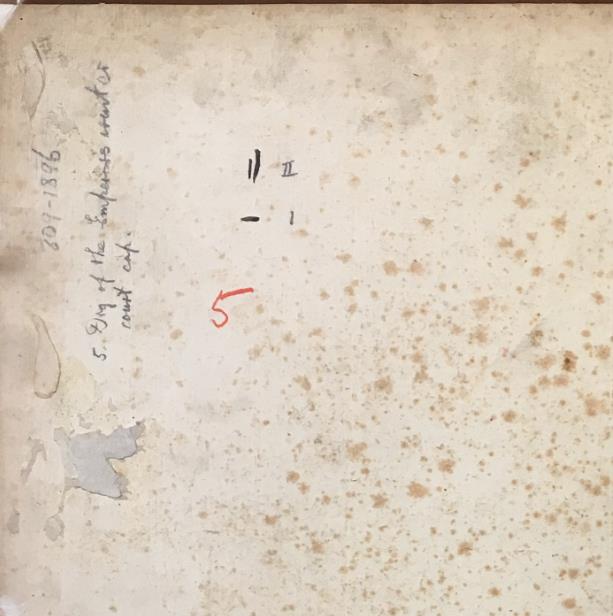
Fig. 3: The reverse side of the Emperor’s winter hat page with black, red and pencil marks.
Photo taken by the author. Courtesy of the Victoria & Albert Museum, London.
The decoding of the meaning of these marks starts with the red numbers. They cannot date to the Qing court in the eighteenth century as modern Arabic numerals were not widely used in China until the late nineteenth to early twentieth century.25 Reading them in order of accession numbers, the red numbers did not make sense until the V&A and NMS portions were compared and could be re-organised in numerical order. With the support from the register of the NMI portion to fill up the gaps, the red marks run unbroken from 1 to 145, and from 1 to 94. Clearly, the red marks reflect an order prior to museums cataloguing, which helps to reconstruct the situation before the acquisition. Also, the highest number in the Harris set is 145, exactly half of 290, the total number of pages the museums acquired from Harris, which further supports this assumption.
Unfortunately, even if the red numbers document an earlier order before the acquisition, they do not suggest any direction for further provenance investigation. Also, the red numbers does not explain the meaning of the black marks. These issues were not resolved until further Chinese archival research was undertaken and recourse made to Chinese art historical studies.
There are three archives recording information related to the HCLQTS, 活計檔 (the Zaobanchu Archives of the Qing Imperial Household Department, huoji dang);26 石渠寶笈續編 (the Additional Edition of Qianlong’s catalogue of Paintings and Calligraphies, Xubian);27 and the 內務部古物陳列所書畫目錄 (List of Paintings and Writings/Texts/Calligraphies held in the Neiwubu Institution of Antiques, mulu).28
As the title suggests, the huoji dang provides the commission and production records of the HCLQTS throughout the Qianlong reign. Several records are particularly relevant. First of all, a record dated 1758 suggest a two-size standard of the HCLQTS, the Large Size Edition (大樣) in ‘1 chi 3 cun 3 fen high and 1 chi 2 cun 8 fen wide’ (c. 42 x 41cm) and the Small Size Edition (小樣) in ‘ 9 cun high 9 cun 7 fen wide’ (c. 29 x 32 cm ).29 By converting this into modern measures, it is clear that the Harris portion and the Palace Museum portion were all part of the Large Size Editions.
Furthermore, a record dated AD 1777 suggests the existence of at least five editions, with finishing dates and places of storage. Accordingly, a set finished in the sixteenth year (1751) was held in Ningshou Palace (寧壽宮, inside the Forbidden City); a set finished in the twenty-nineth year (1764) was kept in the Yuanming Yuan; a set finished in the thirty-third year (1768) was kept in the Summer Residence at Chengde (承德避暑山莊); a set finished in the thirty-seventh year (1772) was kept in the Qianqing Palace (乾清宮, inside the Forbidden City) and the last set finished in the forty-second year (1777) was to be sent to the Shengjing (盛京, or the Mukden Palace in modern day Shenyang).30
The Xubian is the continued edition of the Catalogue of the Paintings and Calligraphies of the Qing Imperial Collection compiled from 1791 to 1793, and this catalogue documents the Qianqing Palace edition of HCLQTS in ninety-two volumes. In the catalogue entry, it is mentioned that the edition was of the size 1 chi 3 cun high and 2 chi 5 cun 3 fen wide, which basically matches the Large Size standard mentioned above. Also, it gives the rules of the illustrations and texts: the right page was for illustrations and the left was for text. When there were two illustrations left and right, there would also be a full folio of text. More importantly, it notes the name of the first and last object in each volume together with the total page number of each volume.31
Unlike the previous two archives, the Mulu was formed in the early twentieth century and catalogues items from the Summer Residence Chengde formerly belonging to the Qing imperial collection. When the Republican government took authority after the 1911 revolution, objects were transferred to the museum and catalogued. Different from Xubian, the Chengde edition here is only 9 cun high and 9 cun 7 fen wide, which matches the abovementioned Small Size standard and also confirms Ming Wilson’s observation. Also in ninety-two volumes, the Chengde edition captured the first and last objects of every volume, but the description here includes the actual number of texts and illustrations of each volume.32
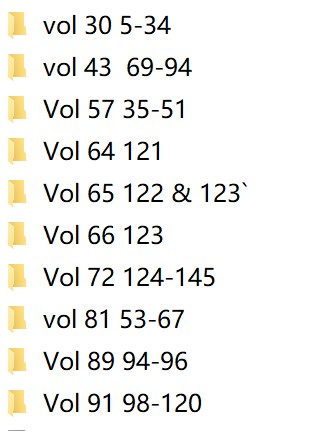
Fig.4: The Harris set categorised in original volume order by the author
Based on research in these historical archives, it was now possible to apply the red numbered HCLQTS pages to the documented volume order. Numbers 1 to 4 are four full pages each having an imperial seal, two of them, the wu fu wu dai tang gu xi tian zi bao五福五代堂古稀天子寶 (The Hall of Five Happinesses and Five Generations, V&A accession no. 807-1896) and the ba zhen mao die zhi bao八徵耄耋之寶 (The Seal of an Octogenarian, V&A accession no. 808-1896), which are also mentioned in both Mulu and Xubian and the other two folios are sealed yuan ming yuan bao圓明園寶 (the Treasure of Yuanming Yuan, V&A accession no.s 805-1896 and 806-1896). The remainder of the pages can all be categorised into corresponding volumes although many of them could not form a complete one (fig. 4).
Fortunately, after categorising the pages from the Harris portion into corresponding volumes based on the print edition and the title of the first and last object mentioned in both mulu and xubian, volumes 30, 43 and 57 seem to be complete. By then comparing the contents of these three volumes to the records from both mulu and xubian, the number of illustrations and the number of texts all matched although the two archives catalogued information in different order.33 Thise proves that although the two archives describe the content in different ways they were referring to the same content.
Based on these findings, it is now possible to make some assumptions about provenance. Since three of the volumes are complete, and according to the red numbering, there are no page breaks within a particular volume – resulting in front and back pages with the middle pages missing – it is now less possible to argue that the Harris portion was made up from a separate source. Instead, the distribution of the pages tends to suggest that the Harris portion was taken from volumes at the same time. Also, if we follow the idea that the Chengde edition and the Qianqing Palace edition were identical in content, the Harris set from the Yuanming Yuan edition should also follow the same pattern.34 Since both editions were recorded to contain corresponding palace seals, the two pages with the yuan ming yuan bao seal present reasonable evidence to suggest clear provenance.
Introducing art historical evidence helps to reconstruct the provenance of the Harris portion of HCLQTS while the materials found through provenance research also contribute to traditional art historical study.
As noted above, there are also black writings on the back of the right pages, whose meaning was unclear. After understanding how the pages match the actual volume, it is now possible to decode the meanings of the black marks. Again, taking as an example the pages of Volume 30, one of the three complete volumes, the upper two vertical lines seem to indicate number two and appeared on the backs of every page in this volume while the lower lines of black marks run from Chinese characters number one to number thirty.35 Considering that Volume 30 has thirty pages and the corresponding pages also follow both the order of the red Arabic numbering and the original order suggested by the printed version, the lower number therefore seems to indicate the page number of the volume.
While the volume in question is Volume 30 rather than 2, but when we separate the 96 volumes into the six original sections, the section on dress starts from Volume 29, with the second volume precisely as Volume 30. The top number in black should thus be the volume number calculated for each section. This pattern also matches the other seven incomplete volumes.
Based on this understanding, it is further possible to assume that the first page of every volume is sealed with Qian long yu lan zhi bao乾隆禦覽之寶 (Viewed by His Majesty Qianlong), since all pages in the Harris set with this seal match the first page of a volume recorded in mulu and xubian.
In addition to these findings, one of the key art historical discoveries during this research concerned the actual production of the HCLQTS. For a very long time, it was widely accepted by scholars that the HCLQTS was formed in the twenty-fourth year of Qianlong’s reign (1759). This idea was derived from the preface of the HCLQTS signed by the emperor with this date. However, after reviewing the huoji dang, it was noticed that the earliest record referring to the production of the HCLQTS can be traced back to 1751, almost eight years prior to the generally accepted finishing date.36 Also, by carefully surveying the early records, a gap between 1752 to 1758 appears in production records while a lot of commission orders can be found either before or after this period.37 Moreover, in the 1777 record noted above, the official referred to the Ningshou Palace edition as finished in 1751, which brings further questions on when exactly it was produced and why the emperor signed the year of 1759 in the preface.
Besides, the review of huoji dang found many imperial workshops mentioned in the commission. From my incomplete survey, over twelve different workshops were mentioned during the decades, which certainly suggest further investigation into how such a large project was organised and how artists and craftsmen from different workshops collaborated.38 There is even a note showing that the Jesuit artist Ignatius Sichelbart (艾啟蒙, AD 1708-1780) may also have been involved in the commission with additional temporary artists hired for the work.39 However, how exactly the artists and officials participated in the process of production remains unclear.
While these issues will not to be resolved by provenance research alone, the provenance of the HCLQTS does trigger a review of evidence formerly neglected and brings new material into the frame for further study in an art historical context.
The discoveries discussed above probably mark the end of provenance research for the Harris portion unless some additional records about this individual can be found. However, the dynamic interactions between art historical and provenance studies indicate further investigation of the larger Yuanming Yuan provenance context in relation to the HCLQTS. As noted at the beginning, there are seven institutions worldwide holding HCLQTS pages. Aside from the two editions in China which are not publicly accessible, the rest of the pages are all in the Large Size format and not a single page has so far been known to be duplicated. The British Library portion was presented by Col. Sir Henry Knollys, K.C.V.O. on 14 June 1924.40 Sir Henry Knollys was the biographer of General James Hope Grant, the commander of the British Army during the war in 1860. As for the portion from the Mactaggart collection, as well as provenance information tracing the pages back to a sale in 1863 noting a Yuanming Yuan origin, there is a folio with a yuan ming yuan bao seal within it.41 Interestingly, after checking the rest of HCLQTS pages in the V&A collection excluding the Harris portion, the museum later acquired another section in 1904 with a fragmented blue sticker with nineteenth-century English writing indicating lot 112. A similar sticker was also found on the back of one page from the NMS portion of the Harris set noting lot 110.42 (Fig. 5 and fig. 6). As the writing style is similar, it is worth considering if all the pages preserved outside China came from the Yuanming Yuan edition looted in 1860. Further investigation above and beyond the Harris set is thus essential.
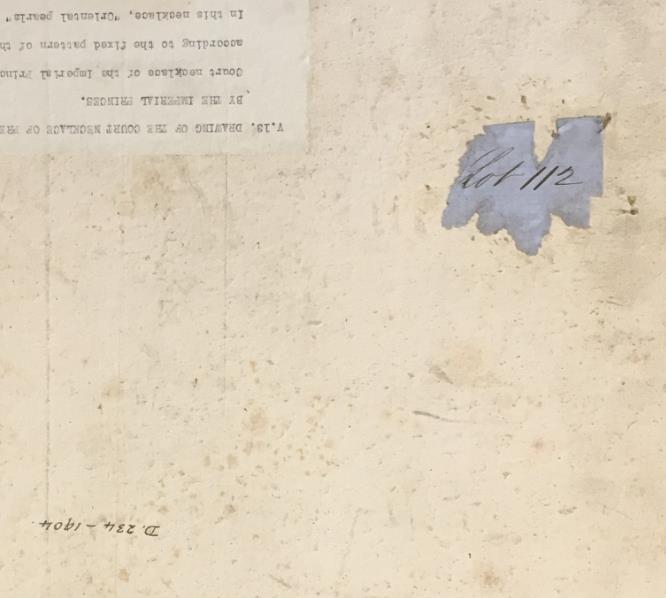
Fig. 5: The fragmented blue stickers indicating Lot 112 at the back of HCLQTS page in the V&A (museum inv. number: D.234-1904). Photo taken by the author. Courtesy of the Victoria & Albert Museum, London.
In the absence of documentation from where the HCLQTS was looted, it is commonly assumed that it was taken from the imperial library in Yuanming Yuan.43 However, if the different editions of the HCLQTS were of similar status in the Qing court, as they are of similar content and even bear the same set of imperial seals discussed above, they may have been stored in similar settings. In the case of the Qianqing Palace edition, the imperial inventory record suggests that twenty-four wooden boxes of the HCLQTS were placed in the Qianqing Palace, “under the East and the West wall of the central hall (明殿)” instead of the nearby wen yuan imperial library (文淵閣).44 Similarly, the Chengde edition was also stored in the Qinzheng Palace (勤政殿), the main reception hall for the emperor in the Imperial Summer Residence in Chengde.45 Considering that Yuanming Yuan was also one of the key imperial palace sites, with a similar status as the Forbidden City in the Qing period, it is reasonable to hypothesize that the Yuanming Yuan edition of the HCLQTS may also have been placed in the main hall and not in the imperial library.
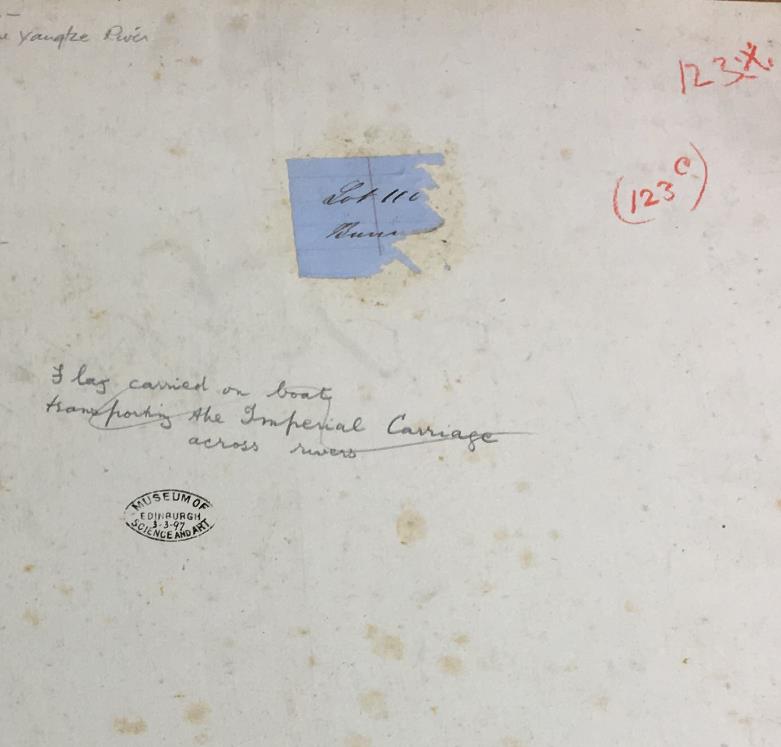
Fig. 6: Similar fragmented blue sticker indicating Lot 110 at the back of HCLQTS page 1968.432 y in the NMS.
Photo taken by the author. Reproduced with permission from the National Museums Scotland
To support this hypothesis, records from the Qing court or from the accounts of soldiers involved in the looting could assist in identifying where it was stored. In other words, if storing HCLQTS in the main hall of imperial palaces was general practice, it could help to identify from where the Yuanmign Yuan edition was looted. Conversely, if the place where the Yuanming Yuan edition of HCLQTS was looted can be confirmed in a future provenance study, it may also help Qing art historians to better understand how such material was stored or displayed in a Qing context. At this stage there is not enough evidence to prove the hypothesis, but provenance and art historical information can potentially contribute to each other for mutual benefit.
As the research experience of this case study indicates, a key challenge of provenance research on former owners with a limited public profile, or an obscure collection, is a lack of supporting documents. Even if scholars may expect ever more comprehensive databases and research tools in the future which may significantly help in finding material, there will always be people or collections for which there is limited data. Considering this fundamental issue, this case study suggests how art historical evidence without direct connection to provenance may nevertheless contribute to its research. In addition, as discussed above, provenance archives and art historical records are often independent from each other but the objects relevant to them are the same. Therefore, although this will not bring an immediate conclusion, findings from one side will contribute to the other. For these reasons, provenance research must actively interact with other disciplines.
Haoyang Zhao is a PhD student in History of Art at the University of Glasgow.
1 Nancy H. Yeide, Konstantin Akinsha and Amy L. Walsh, The AAM Guide to Provenance Research (Washington, DC: American Association of Museums, 2001).
2 Jane Milosch and Nick Pearce, eds., Collecting and Provenance: A Multidisciplinary Approach (Lanham Boulder New York London: Rowman & Littlefield, 2019), xv.
3 Gail Feigenbaum and Inge Reist, Introduction, in Gail Feigenbaum and Reist Inge, eds., Provenance: An Alternative History of Art (Los Angeles: Getty Publications, 2012), 1.
4 Louise Tythacott, ed., Collecting and Displaying China’s ‘Summer Palace’ in the West: The Yuanmingyuan in Britain and France (New York, Abingdon: Routledge, 2017), 1.
5 James Hevia, English Lessons: The Pedagogy of Imperialism in Nineteenth-Century China (Durham, NC: Duke University Press, 2003), 330.
6 Liu Lu, An Illustrated Manual for Regulating the Qing Society: A Discussion of Several Issues Relating to ‘Huangchao liqi tushi’ in Palace Museum Journal, 4 (2004), 130–144.
7 Ming Wilson, New Research on the Ceremonial Paraphernalia Album in the V&A, in Transactions of the Oriental Ceramic Society, 68 (2003–4), 51–59.
8 Lu, An Illustrated Manual for Regulating the Qing Society, 139.
9 Wilson, New Research on the Ceremonial Paraphernalia Album, 51
10 Gary Dickinson and Linda Wrigglesworth, Imperial Wardrobe (Berkeley, CA: Ten Speed Press, 2000), 22.
11 See HCLQTS, Palace Museum Beijing website, accessed 4 July 2018 at www.dpm.org.cn/ancient/mingqing/142815.html for information about the Palace Museum edition. There is no public information on the condition of the Chengde edition from the National Museum of China.
12 Wilson, New Research on the Ceremonial Paraphernalia Album, 52.
13 Wilson, New Research on the Ceremonial Paraphernalia Album and Margret Medley, ‘The Illustrated Regulations for Ceremonial Paraphernalia of the Ch’ing Dynasty’ in the Victoria and Albert Museum, in Transactions of the Oriental Ceramic Society 59 (1957) 95–105. A HCLQTS workshop was held by Academia Sinica Taipei in August 2019, and a series of papers presented in the workshop started to be published recently. See The National Palace Museum Research Quarterly, vol. 37, no. 1, and vol. 37, no. 2.
14 Ibid.
15 Wilson, New Research on the Ceremonial Paraphernalia Album, 51
16 There are very limited records related to these later acquisitions compared to the Harris portion, and a more detailed investigation is still in progress as part of this ongoing project.
17 V&A Archives MA/1/H848 “Harris, W. H.”.
18 Ibid.
19 Haoyang Zhao, Objects of multiple meanings, a provenance research of the Huangchao Liqi Tushi (Illustrations of Imperial Ritual Paraphernalia) circulated and collected in the British Isles in the mid–late 19th century, unpublished MRes thesis, University of Glasgow, 2019.
20 Harris File, C 78/P81, SC/GL/NOB/C/087/18, London Metropolitan Archives.
21 Walter Henry Harris, Collection of Military and Naval Medals and Decorations, 1891, available at National Art Library, record no. 85.E Box II.
22 Greg M. Thomas, The Looting of Yuanming and the Translation of Chinese Art in Europe, in Nineteenth-Century Art Worldwide, 7/2 (2008), 33–36.
23 I would like to thank Dr Louise Tythacott to help arranging the viewing. Also, thanks for the help of Dr Qin Cao and Nicola Garside in the National Museum of Scotland and Yoojin Choi from the Victoria & Albert Museum, as well as many others who helped me access archives and materials.
24 Thanks to Dr Tythacott for pointing this out during the viewing.
25 Huang Heqinq, When Were the Arabic Numerals Introduced to China?, in China Terminology, 21/05 (2019), 68-74.
26 Zhongguo di 1 li shi dang an guan. Qing Gong Nei Wu Fu Zao Ban Chu Dang an Zong Hui. Di 1 ban. (Beijing: Ren min chu ban she, 2005).
27 Qinding Shiqu Baoji Xubian 钦定石渠宝笈续编, Vol. 3 accessed 5/03/2020 at https://archive.org/stream/02094567.cn#page/n144.
28 Ji Xianlin and Xu Juan, eds., Neiwubu Guwu Chenliesuo Shuhua Mulu 內務部古物陳列所書畫目錄 in Zhongguo Lidai Shuhua Yishu Lunzhu Conbian, 中國歷代書畫藝術論著叢編, Vol 13, (Beijing: Zhongguo da bai ke quan shu chu ban she, 1997), 543–554. With my special thanks to Mr Ma Xiao for providing this valuable reference.
29 Huoji dang, Vol 23, 488.
30 Huoji dang, Vol 40, 381
31 Xubian, Vol. 3, accessed 5/03/2020 at https://archive.org/stream/02094567.cn#page/n144.
32 Mulu, 543-554.
33 The xubian records the number of folios in each volume while the mulu records the number of pages and illustrations in the corresponding volumes. The comparison proves that they recorded the same information but described it in a different way.
34 See footnotes 31 and 32.
35 See fig.3 as an example showing the page marked in black ink as “2, 1”. All the remaining pages belonging to this volume follow this pattern.
36 Huoji dang, Vol. 17, 355.
37 A detailed discussion can be found in Haoyang Zhao, unpublished MRes Thesis, University of Glasgow, 2019.
38 Ibid.
39 Huoji dang, Vol. 28, 512.
40 See British Library website, Or 9430 available online at www.bl.uk/manuscripts/FullDisplay.aspx?ref=Or_9430.
41 Dickinson and Wrigglesworth, Imperial Wardrobe, 22.
42 Page D.234-1904 from the V&A and 1968.432 y from the NMS.
43 HCLQTS, V&A website, available at http://collections.vam.ac.uk/item/O109006/the-treasure-of-the-eight-illustrated-manuscript-leng-jian/.
44 Wang Kaixi 王開璽, “Yuanming Yuan Shoucang ji Liushi Haiwai Wenwu Shuliang Bielun”, 圓明園收藏及流失海外文物數量別論, Beijing Normal University Bulletin: Social Science 4 (2016): 138–149.
45 Zhongguo diyi lishi danganguan and Chengde shi wenwu ju, Qinggong Rehe Dangan 清宫热河档案 (Beijing: Zhongguo Dangan Chubanshe, 2003), Vol. 11, 166–167. With special thanks to Mr Ma Xiao for providing this valuable reference.